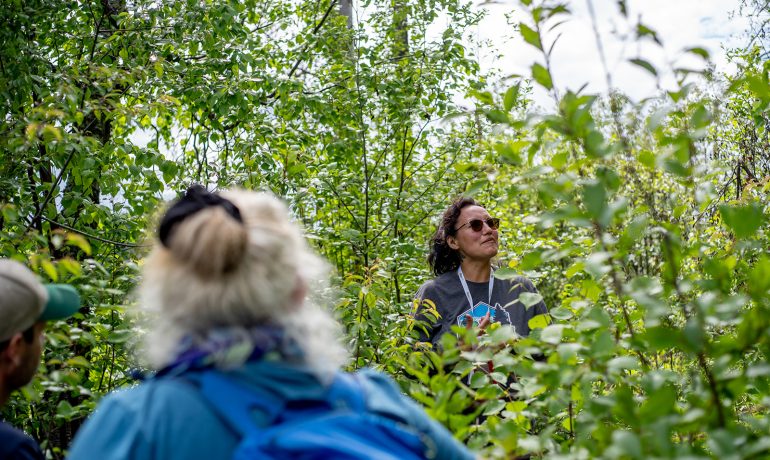Less than one per cent of provincial AAC in community forests
by Jim Hilton – Williams Lake Tribune
Mar 14, 2014
I believe in community forests so why am I not thrilled with the recent announcement about the government approval of the Williams Lake Community Forest.While researching the government’s most recent tenure allocations (Report ID APTR033 2014-01-15) for another article I discovered the following:After initiating the community forest program more than 14 years ago, the government has allocated .98 per cent of the provincial annual allowable cut to this tenure form.After more than 20 years the woodlot program has done even worse at only .3 per cent of the provincial AAC of 77 million cubic metres.Another reason for a lack of enthusiasm was the realization that many others in the surrounding communities were less content than I was.I have attended a number of meetings about the concerns around the location and exclusion of some communities (Big Lake, Horsefly and Miocene). I witnessed a lot of wasted energy fighting over what I considered to be an insufficient AAC for a population base the size of Williams Lake and the surrounding community. Even a city like Revelstoke has held a tree farm licence for some years with more than a 70,000 cubic-metre AAC.Another community forest in the Chilcotin has one for 40,000 cubic metres.Why not an AAC of at least 90,000 cubic metres so a reasonable allocation could be divided up amongst the relatively large population?I first became involved with community forests in 2001 a year before retirement.I was involved with establishing the first 10 community forests in the province. As a region we did fairly well and ended up with two community forests (Soda Creek/Likely and Esk’etemc at Alkali Lake). After I retired I was asked to be on the board of directors at Esk’etemc.A number of recent articles have pointed out the divisions in the community caused by the latest decision about the mine. I hope this column will give all sides the opportunity to focus on some other options that could bring benefits our community.Rather than continue the discussion on cull piles, I think there are a couple issues that deserve immediate attention.The first is the Williams Lake Timber Supply Review and Timber Supply Area data package and public discussion paper.My limited column space in Forest Ink will be put to better use in discussing the implications of the various proposals rather than a repeat of the material in these documents.A homework assignment for you is to look up the provincial AAC apportionment. The reason for reviewing this information is the rumour in industry is government will be encouraging replacing volume-based to more area-based tenures (i.e. TFLs). More TFLs will supposedly encourage more intensive silviculture.If that is the assumption, there is one simple question for the Minister of Forests. Approximately 16 per cent of the AAC has existed as area-based tenures for many decades.What proof do we have that there has been a significant investment in intensive silviculture during that time (i.e. money from the companies and not from any government program?) Some of the highlights of the apportionment documents are the following:There are a number of tables to look at but one of the most revealing is the following:Ministry of Forest and Range Apportionment System, Table APTR043 shows the apportionment of the volume-based licences as follows: The provincial AAC is 77 million cubic meters per year. A total of 436 companies control 71 per cent. Forty companies control 60 per cent and only six companies control 40 per cent of the provincial AAC.My estimate is that 90-plus per cent of the provincial milling capacity is controlled by approximately 40 of the companies with the largest apportionments.In some communities there may only be one company to sell logs to. Some other tables will show that 37 per cent of the licences are replaceable (the majority if not all controlled by large corporations), around two per cent are assigned to First Nations, .98 per cent to existing community forests and .31 per cent to woodlots.I have a proposal that I will discuss in more detail in my next column but here is the basic idea. What about establishing three new community forests in 100 Mile House, Williams Lake and Quesnel.For ease of calculations, I suggest an AAC of at least 100,000 cubic meters for each city (that works out to four per cent of the provincial AAC).If each community were to receive a reasonably fair price for their logs they could expect a profit of around $1 million in each community each year.This money would be specifically used to create jobs. My suggestion would be use some of the money to find ways to use the energy in cull piles rather than burning them.The question for our two MLAs and other local politicians is this. What are your priorities: support the establishment of more TFLs for the major licensees and their shareholders or promoting more local tenures which would keep more profits and jobs in the communities you represent?If the jobs helped our environment that would be a win-win for everyone.Jim Hilton is a professional agrologist and forester who has lived and worked in the Cariboo Chilcotin for the past 40 years. Now retired, Hilton still volunteers his skills with local community forests organizations.
Related Post
As Published in Canadian Forest Industries Magazine, Pulp & Paper Magazine and Canadian Biomass Magazine
Jennifer Gunter’s Op Ed, “Community Forests: Rooted in Community,
Minister of Forests Mandated to Expand BC’s Community Forest Program
In the recently released mandate letter to the Minister



